Posts Tagged ‘Qing Dynasty’
-
A SPECTACULAR WONDERLAND
Travelling at an impressive 300km/hr, a high-speed railway train took 5 hours and a half to reach Shanghai from Beijing. The voyage was impeccably comfortable. The train station was huge and amazing. Yet the actual surprise was the sheer difference between Beijing and Shanghai.
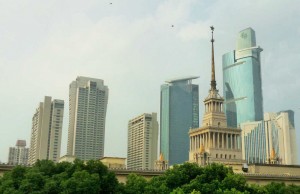 Traffic in Beijing was crazy but we had hardly left Shanghai’s train station when we were already blocked behind a long queue of cars. This is no wonder if one considers that about 24 million people live in this city. Recent modernization and progress in Shanghai have attracted many persons and in the last five years, the population tripled itself.
Traffic in Beijing was crazy but we had hardly left Shanghai’s train station when we were already blocked behind a long queue of cars. This is no wonder if one considers that about 24 million people live in this city. Recent modernization and progress in Shanghai have attracted many persons and in the last five years, the population tripled itself.Along the road, we observed that plain residential high rises were wide to an extreme. Besides them, luxurious or commercial high rises glistened beautifully as if in a bid to outshine the sun itself. Older traditional structures, together with buildings which formed part of the foreign concession areas, claimed the passers-by attention with their distinguished architecture.
Originally, a simple fishing village, Shanghai’s economy expanded rapidly once it was turned into a commercial port. Since at the time, traders could only use the sea or waterways as a means of transportation, Shanghai’s wide harbour began to attract numerous Chinese from various parts of China and also several foreigners. A society of immigrants started to flourish, each of which began to leave their influences in this new city.
In a few years, a large flat muddy area, overgrown with reeds, which was situated on the north bank of Huangpu River, was turned into a zone for foreigners and they named it the Bund. Starting from just a one-sided street, running in north-south direction, the location soon flourished with commercial buildings which increased further the significance and the economy of Shanghai.
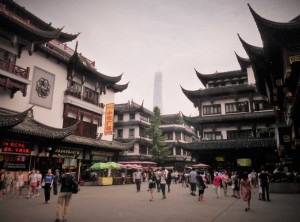 Yet in the mid-19th century, serious conflicts arose between the forces of Western countries and the Chinese, Qing dynasty, after China attempted to suppress the opium trade. Since the 18th century, foreign traders, particularly the British, had been illegally exporting opium which they imported from India. By the 19th century, this trade had grown dramatically, and the resulting widespread addiction in China began to cause serious social and economic disruption. Two Opium Wars broke out in which China was twice defeated and foreign concessions were established. It was in 1943, during the war between China and Japan, that the foreigners decided to abandon Shanghai.
Yet in the mid-19th century, serious conflicts arose between the forces of Western countries and the Chinese, Qing dynasty, after China attempted to suppress the opium trade. Since the 18th century, foreign traders, particularly the British, had been illegally exporting opium which they imported from India. By the 19th century, this trade had grown dramatically, and the resulting widespread addiction in China began to cause serious social and economic disruption. Two Opium Wars broke out in which China was twice defeated and foreign concessions were established. It was in 1943, during the war between China and Japan, that the foreigners decided to abandon Shanghai.Between the 1950s and the 1960s, some of the elder people who resided in Shanghai, proposed to the government to demolish these colonial buildings which reminded them of a bitter past. However eventually, it was decided to retain these structures since they represented a real part of the city’s history, even if painful.
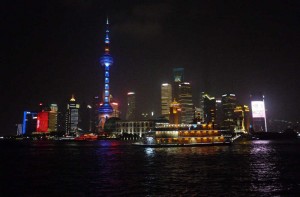 In the last 100 years, the Bund frontage buildings were repaired and reconstructed several times. Today, this area is embellished with prominent and elegant structures which contrast deeply with the opposite side of the Bund wherein some daring and bizarre high rises have been built. At night, the latter, turns into a spectacular wonderland as the colossal structures are fully illuminated in bright and colourful lights.
In the last 100 years, the Bund frontage buildings were repaired and reconstructed several times. Today, this area is embellished with prominent and elegant structures which contrast deeply with the opposite side of the Bund wherein some daring and bizarre high rises have been built. At night, the latter, turns into a spectacular wonderland as the colossal structures are fully illuminated in bright and colourful lights.A visit to this district which looks like a strange combination of London and New York, will reveal why it has become the symbol of Shanghai and the pride of many of its residents. Crowds of visitors gather daily at the Bund in order to enjoy the beautiful scenery on the Huangpu River which divides the old and the modern zones. Nonetheless, if one wants to enjoy the experience to the full, a night boat cruise is certainly recommended.
Our guide from Shanghai explained to us that this city has changed tremendously in these last years. In 1987, there were only 12 high rise buildings in Shanghai, whereas today, there are around 140,000. People have more money in their pockets, education facilities have increased, and life is more comfortable especially due to the efficient and far-reaching subway system. Yet he felt that simultaneously, Shanghai citizens were losing some important characteristics of the city. Indeed, when elders returned to the city after living far away, they could not find their way around as a number of the old landmarks have gone or are engulfed amongst the different modern landscape.
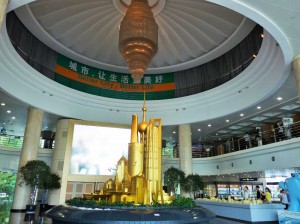 The repercussions of the sudden modernization of Shanghai have always been the focus of the authorities which are trying their very best to mitigate the impact of such changes. Their plans and projects are comprehensively described in the vast exhibitions which are displayed at the Shanghai Urban Planning Exhibition Hall which is located at the People’s Square. The centrepiece of the exhibition is a huge scale model of the city which shows all the existing and approved buildings. Moreover, a circular screen provides visitors with the opportunity to enjoy a fascinating 3D virtual tour around the city of Shanghai.
The repercussions of the sudden modernization of Shanghai have always been the focus of the authorities which are trying their very best to mitigate the impact of such changes. Their plans and projects are comprehensively described in the vast exhibitions which are displayed at the Shanghai Urban Planning Exhibition Hall which is located at the People’s Square. The centrepiece of the exhibition is a huge scale model of the city which shows all the existing and approved buildings. Moreover, a circular screen provides visitors with the opportunity to enjoy a fascinating 3D virtual tour around the city of Shanghai.Photo presentations explain how old buildings which were worth preserving and conserving, were carefully selected and restored, and then given a function in order to revive them. A particular example is the M50 contemporary art district which up to a few years ago was a disused industrial space. Another is the pedestrian walkway of Nanjing Road wherein 100 year old shops were amalgamated with new structures from where now, one can find speciality products of different trades standing next to famous brands.
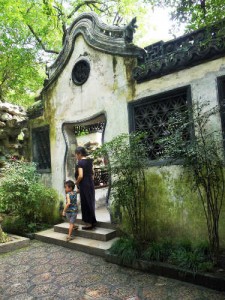 In Shanghai Old Street, which was reconstructed according to traditional Chinese style, visitors can roam around Yuyuan Market and absorb the allure of earlier times, whereas the nearby Yuyuan Gardens provide the beauty and serenity of a green environment. In the outskirts of Shanghai, ancient towns, such as Zhujiajiao, represent life of a distant and far simpler period in Shanghai. Concentrated under Shanghai’s Expo2010 motto ‘Better City, Better Life’, the main message of this place is to urge people to be proud as well as protective of their new city.
In Shanghai Old Street, which was reconstructed according to traditional Chinese style, visitors can roam around Yuyuan Market and absorb the allure of earlier times, whereas the nearby Yuyuan Gardens provide the beauty and serenity of a green environment. In the outskirts of Shanghai, ancient towns, such as Zhujiajiao, represent life of a distant and far simpler period in Shanghai. Concentrated under Shanghai’s Expo2010 motto ‘Better City, Better Life’, the main message of this place is to urge people to be proud as well as protective of their new city.A delightful wider look at the landscape of the city of Shanghai can be appreciated at a choice of revolving restaurants which are available on high towers. Definitely a surreal experience which gives you the ultimate impression of being on a totally different planet.
(This article was published in Escape Suppliment of The Sunday Times of Malta dated 13th September 2015)
-
Stepping through the Forbidden City’s gate
For many years, I read several features and watched various documentaries regarding the Forbidden City in Beijing. However, once I found myself in front of Wumen, its main entrance, I simply stood there in silence and awe.
At an altitude of 38 metres, this area, which is also known as the Meridian Gate, is the highest section of the Forbidden City. Its imposing nature with five towers looking upon this square gave me shivers especially when I recalled that here, in the old days, the captured prisoners-of-war used to be presented to the emperor, whereas those sentenced for capital punishment were executed.
As originally intended by those who constructed this site, I felt small and bewildered in the presence of such magnitude and as I stepped further through the gate, I felt thankful that nowadays this is only a tourist site.
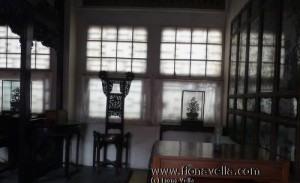 The Forbidden City was built to serve as the emperors’ royal palace. Within it, the emperors of the Ming and Qing dynasties carried out their administration and lived together with their families. In fact, this site was used as the residence of 24 emperors until the last one, Aisin Gioro Puyi, emperor of the Qing Dynasty, abdicated in 1911.
The Forbidden City was built to serve as the emperors’ royal palace. Within it, the emperors of the Ming and Qing dynasties carried out their administration and lived together with their families. In fact, this site was used as the residence of 24 emperors until the last one, Aisin Gioro Puyi, emperor of the Qing Dynasty, abdicated in 1911.Emperor Chengzu of the Ming Dynasty started the construction of this city in 1406 and its completion took 14 years. Around 100,000 skilled technicians and millions of labourers were involved in this architectural masterpiece.
Most of this magnificent palatial complex was built from wood and it is the largest wooden cluster in existence in the world today. Other material used included white marble from Fangshan which is situated in the limits of Beijing, and granite from Hebei Province.
It was not easy to ship these stones to the city since there was no machinery at the time. Yet the Chinese succeeded to conclude this outstanding project by carrying this material on wooden rollers during summer and by sprinkling the roads with water in mid-winter in order to make an ice-path which could ease transportation. Water for the latter use was made available by digging out a well every half kilometer.
Eventually, the whole city covered an area of 720,000 square metres and within it, one could find numerous palaces, pavilions, squares and gardens. In all, 9,999.5 structures were built; the half room accommodates only a staircase.
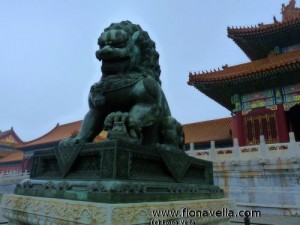 It is interesting to note that the emperor could not have 10,000 rooms in his city since it was believed that the deity emperor Hade had that amount of structures in his Heavenly Palace. Therefore, out of respect, his son, who was the emperor on earth, could not have a residence as spacious as that of his father. Meanwhile, this huge amount of rooms in the Forbidden City was intended to prolong the life of the earthly emperor.
It is interesting to note that the emperor could not have 10,000 rooms in his city since it was believed that the deity emperor Hade had that amount of structures in his Heavenly Palace. Therefore, out of respect, his son, who was the emperor on earth, could not have a residence as spacious as that of his father. Meanwhile, this huge amount of rooms in the Forbidden City was intended to prolong the life of the earthly emperor.Along the centuries, various parts of this ancient city were restored or rebuilt. However, its basic form and layout remains in the original state. In fact, its structures are spread out in an orderly manner alongside the central axis line which goes through from south to north. Moreover, its layout indicates the feudal hierarchy and reflects the traditional philosophy of yin-yang and the Five Elements.
The Forbidden City is surrounded by 10 meter high walls and at each of its four corners there is a tower. Outside these walls, a 52 meter wide moat full of water encircles the city in order to strengthen its defense system.
Thousands of tourists from various countries visit this site daily and yet the grandeur of this place is so amazing that its space seems unable to ever be exhausted.
 The largest square in the Forbidden City is Taihe Dian and it has an area of 30,000 square metres. On its four sides, one finds a number of bronze vats which used to be filled with water in order to prevent fire. Water was provided by the Inner Golden Water River which ran across this section of the city. Moreover, this river had the function of draining off rain water and to decorate the square.
The largest square in the Forbidden City is Taihe Dian and it has an area of 30,000 square metres. On its four sides, one finds a number of bronze vats which used to be filled with water in order to prevent fire. Water was provided by the Inner Golden Water River which ran across this section of the city. Moreover, this river had the function of draining off rain water and to decorate the square.On the other hand, in the square which lies in front of the Gate of Supreme Harmony, visitors can observe the hall wherein the emperors administered their power, held ceremonies and summoned ministers. In this outer court, there is also the largest pair of lions in the whole city; the male has a ball under his paw, whereas the female plays with a cub.
Curiously, in the Forbidden City, there is also the Palace of Abstinence wherein the emperor stayed and fasted for three days before he celebrated the sacrificial ceremony to the heaven and earth.
Contrarily, other areas within this magnificent city were intended to appease the emperor’s pleasures; including numerous structures reserved for his concubines.
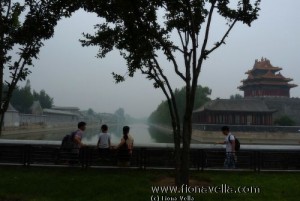 These concubines were selected amongst the most attractive females and were expected to dedicate their lives in order to please their emperor. Yet not all these concubines had the chance to sleep with the emperor; some only once, some not at all.
These concubines were selected amongst the most attractive females and were expected to dedicate their lives in order to please their emperor. Yet not all these concubines had the chance to sleep with the emperor; some only once, some not at all.Surely, those who did not succeed to attract the emperor’s interest were disregarded in a corner of the palace but they were never allowed to marry anybody else. Therefore, the main aim of these imperial concubines was the opportunity to bear a child of the emperor so that they could acquire more power. Indeed, that concubine whose son managed to become the next emperor was even given the title of Empress Dowager.
Due to the massive size of this city, it is impossible to visit it all. Nonetheless, I believe that I have seen enough to impress me and to leave a memorable imprint on my mind.
The exquisite designs and colours which were used in its construction are truly fascinating and marvelous. Likewise, the ancient furniture and decorations which adorn its palaces and halls are unique and superb.
When this city was still in vigour, no one was allowed to enter into it without a permit. That is why, it is known as the Forbidden City. Yet in 1925, when the Qing Dynasty was over, this site was turned into a museum and in fact today, this city is also known as the Palace Museum.
Within this period, around one million relics were collected from this city and many of them are exhibited in its illustrious halls. These artifacts include objects made from wood, bronze, pottery and porcelain that were designed by skilled artists during the Ming and Qing Dynasties. Other masterpieces comprise precious artworks, sculptures and numerous other treasures.
Meanwhile, the Imperial Garden which lies at the end of the city is another attractive facet of this place. In ancient days, this was a private retreat for the imperial family and the imperial concubines.
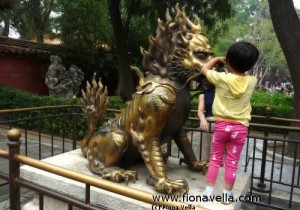 There are around twenty architectural structures in this garden which include pavilions, rooms, towers and halls. Each one of these bears a different style and is arranged symmetrically in hierarchical order.
There are around twenty architectural structures in this garden which include pavilions, rooms, towers and halls. Each one of these bears a different style and is arranged symmetrically in hierarchical order.Rare flowers and trees were planted in this garden, some of which still survive today. This place was also adorned with a pond full of fish in order to create a sense of harmony and peace.
One of the most renowned sections in this garden is Duixiushan; an artifical hill built of Taihu Lake Rocks of varying shapes. Its centre was formed into a cave and two stairways spiral up to the top from its southern and eastern sides. The imperial family used to climb up this hill to reach the Pavilion of Imperial View which sits at the top in order to enjoy the spectacular scenery during significant celebrations.
In 1961 this city was included in the List of the Historical Monuments and Cultural Relics under State Protection and due restoration and preservation took place. In 1987, UNESCO inscribed the Forbidden City as a World Heritage Site.
(This article was published in the Travel Supplement of the Sunday Times of Malta dated 15 February 2015)
-
With a salutation

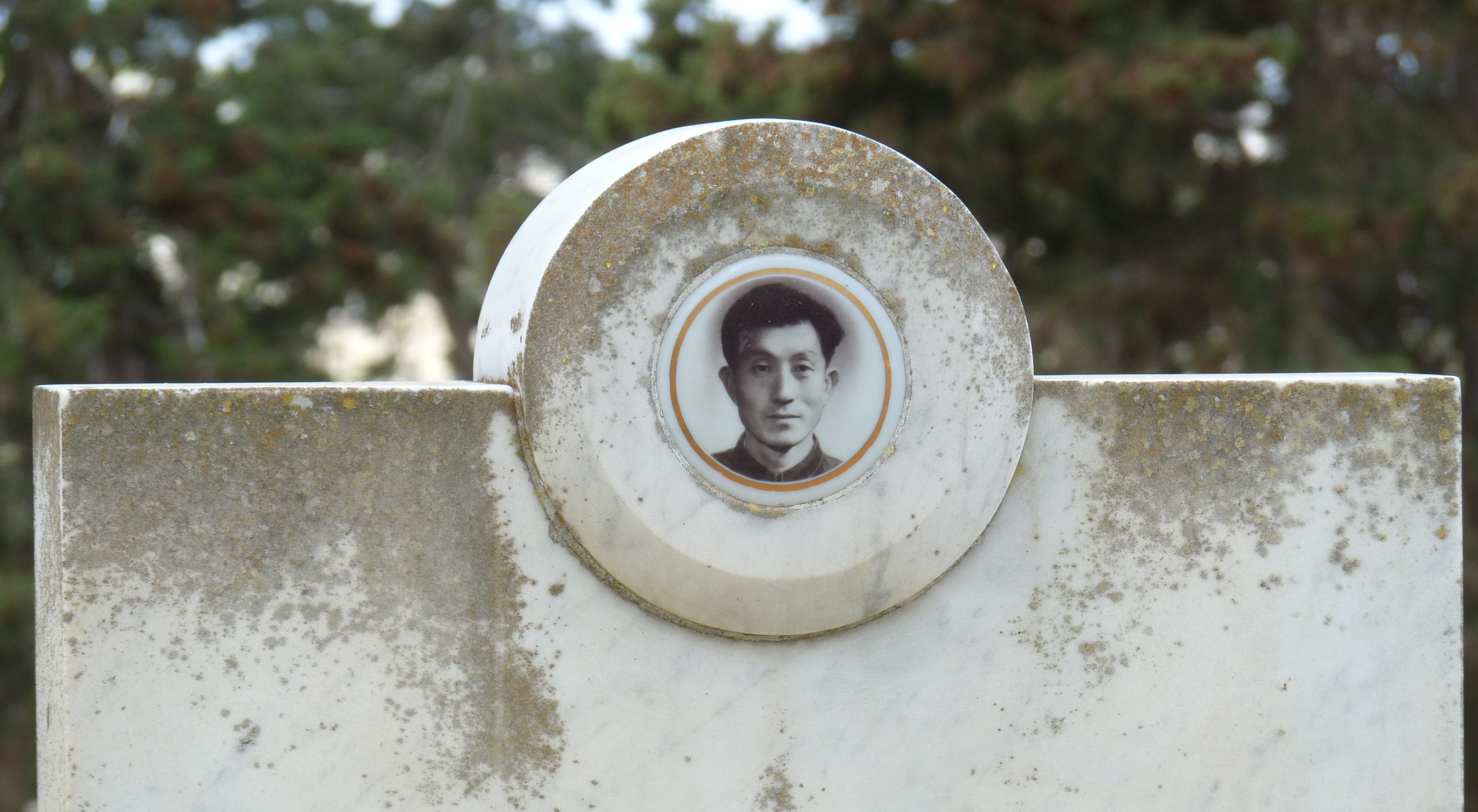
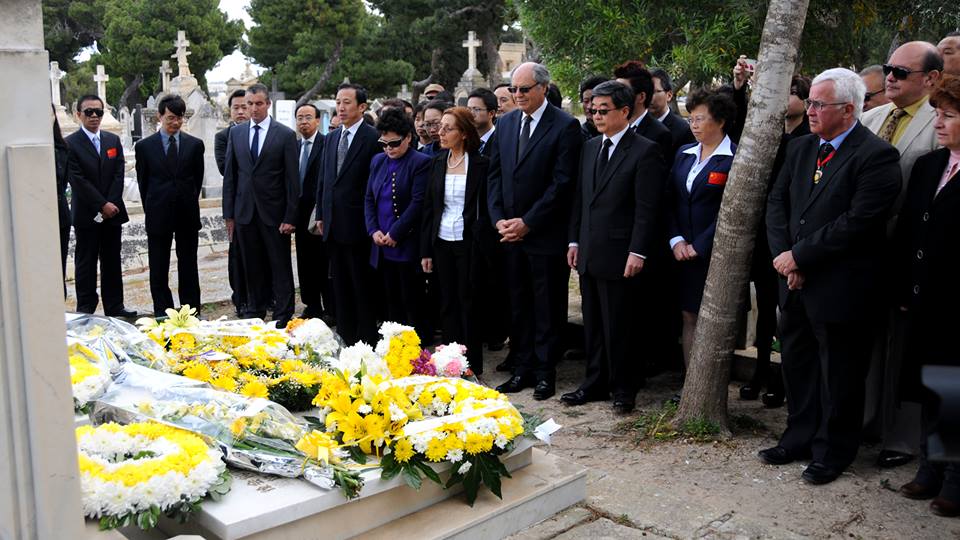
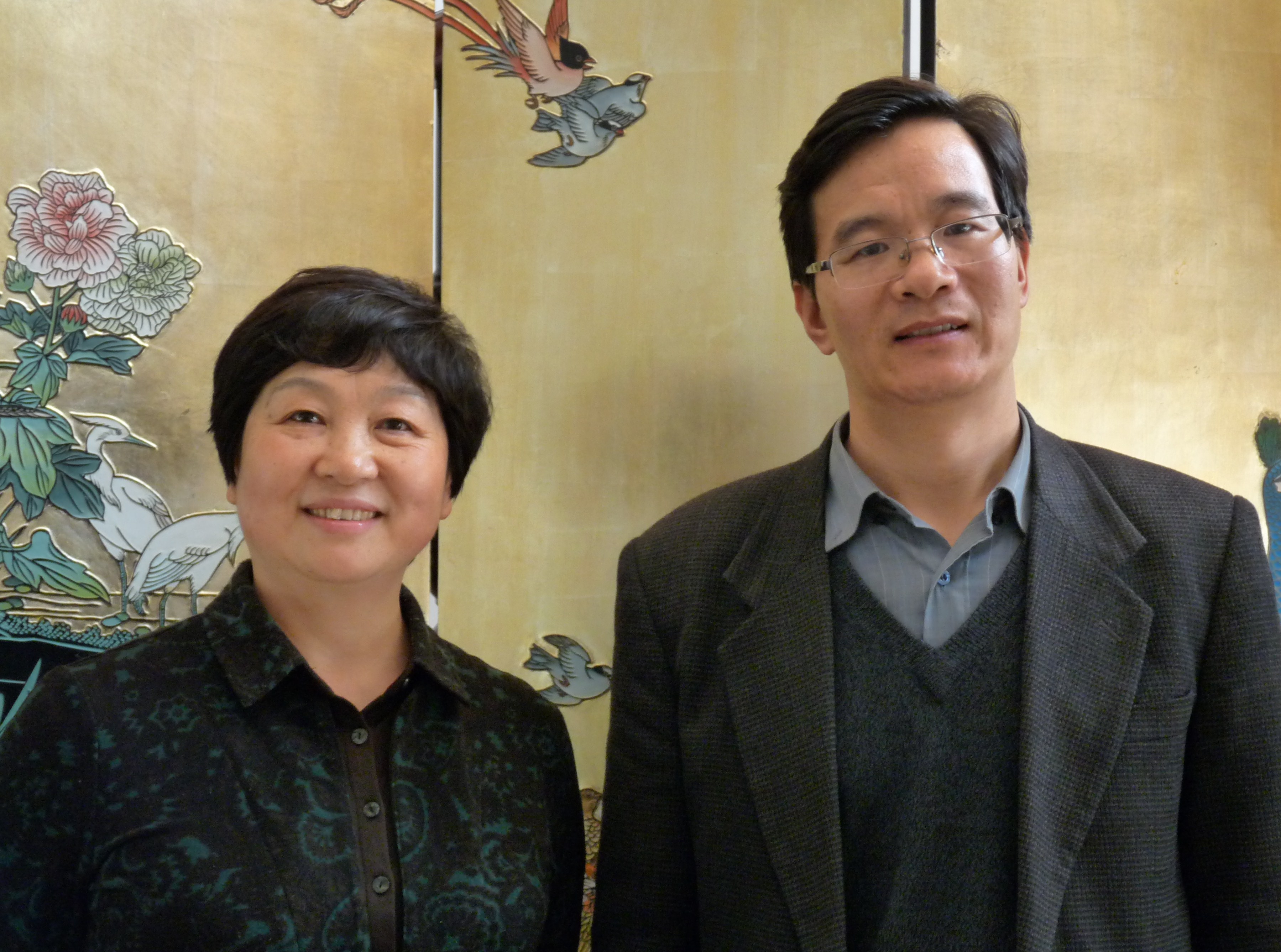
On 5th April 2014, representatives from the Embassy of the People’s Republic of China in Malta and a number of Chinese persons, together with some Maltese individuals, including Malta Minister of Finance, Edward Scicluna, Mayor of Santa Luċija, Frederick Cutajar, and members of the Malta-China Friendship Society, attended to a ceremony in respect of two Chinese workers who died in our country in 1979.
These two workers formed part of a group of hundreds of Chinese workers who were sent by the Chinese government in order to assist Malta in the construction of Dock Number 6 or as it is popularly known as the Red China Dock. This took place according to an agreement between China and Malta in the 1970s, wherein China agreed to help our islands in order to strengthen our economy.
The two Chinese workers who lost their life in Malta
Unfortunately, Xu Huizhong, a Chinese engineer aged 47, lost his life tragically on the 16th March 1979 whilst he was assisting in the construction of the dock. He was honoured with the Medal of Honour of the Republic of Malta on the 23rd April 1979. On the other hand, engineer Gu Yanzhao, died of natural causes at the age of 46.
These two Chinese workers were buried in Malta according to their relatives’ decision since in Chinese culture, it is believed that in order to rest in peace, these individuals had to be present on the same land when the project on which they were working was successfully finished. Moreover, they believed that in this way, they would continue to be remembered with respect by the Maltese people.
In the words of Minister Scicluna, “There is no higher sign of friendship than to give your life in order to help another country.” And now that with these articles, I am getting much fonder of China and its people, I could not allow myself not to investigate more this story and all the narrative that I knew that I would discover…
The ancient tradition of the Qingming Festival
I started my exploration by visiting the tomb of these two Chinese workers which is located at the Addolorata cemetery. I took with me a colourful bunch of flowers as a sign of respect and love. However, when I arrived in front of these tombs, I realized that I had met another Chinese cultural aspect as unlike my bunch, all the flowers that were left on these tombs after the ceremony, were white and yellow. As soon as I returned home, I researched about this and I learnt that this was part of the ancient Chinese tradition known as Qingming Festival.
In order to help me to understand better this concept, this week, I met Qiu Guangling and her assistant, Shi Qidong, at the Embassy of the People’s Republic of China in Malta. They informed me that this festival formed part of the 24 aspects of the Chinese lunar calendar wherein among the various celebrations, people celebrate the beginning of the Spring season and the rememberance of their dead ancestors. Some refer to this festival as Pure Brightness Day or Tomb-Sweeping Festival and this generally takes place around the 5th April.
The legend of Jie Zitui
Often, the Qingming Festival is associated with Jie Zitui who during the 7th century B.C. lived in the province of Shanxi. It is said that he was one of the few officials who followed Chong Er, the son of the Duke of Jin, when he had to leave due to severe restlessness in his country.
Chong Er lived for 19 years in exile and his situation became so miserable that eventually everyone abandoned him, except for five individuals, including Jie Zitui. This official respected his leader so much that when Chong Er was dying of hunger, he cut a piece from his thigh and cooked it for him so that he could get back his strength.
Finally, there came a time when Chong Er succeeded to win back his deserved throne and he returned to Jin as a leader. Together with him, he took those loyal officials who had remained with him through the worst time and he gave them the title of noblemen. Yet for some reason, Chong Er forgot Jie Zitui who now was an invalid due to the personal sacrifice that he had done for his master.
Nonetheless, when Chong Er realized his mistake, he immediately went to Mian mountain in order to find Jie Zitui who had gone to live there with his mother. But Jie Zitui had discovered serenity in this natural refuge of the mountain environment and he did not want to leave it to return to the city. Therefore, although he was aware that Chong Er was looking for him, he remained hidden with the hope that his friend will eventually give up and leave him alone.
Yet this did not take place, for Chong Er was so resilient to find him that he decided to set the mountain forest on fire in order to force his friend out of his hideout. The huge fire which was lit continued to burn for three days until all the mountain was burnt out. Alas, when the people of Chong Er went in to look for Jie Zitui, they found him burnt together with his mother.At these terrible news, Chong Er fell into miserable grief for what he had done and out of respect towards these two persons, he buried them at the foot of Mount Mian and changed its name to Jie. Moreover, he built a temple on it in honour of their memory.
In order to remember this tragedy, he ordered that each year in those particular three days, nobody could light a fire in his house and only cold food could be eaten. This started the Hanshi or the Cold Food Festival.
Then, around 300 years ago, during the Qing Dynasty, this festival was incorporated witin the Qingming Festival and this event was changed into a celebration of rememberance and sacrifice for the ancestors. Nowadays, the Cold Food Festival is celebrated a day before the Qingming and the activities continue for three whole days.
Just like we do in November, when we visit our cemeteries in order to show respect towards our dead relatives, in China these activities take place in April. Indeed, during this festival, a lot of Chinese people gather into cemeteries wherein they clean the tombs, repaint the calligraphy on them, burn incense and leave white and yellow chrysanthemums which in Chinese culture symbolize sadness and grief. Furthermore, they offer food and drink to their dead, and relatives meet on the tombs or in the surrounding gardens in order to eat together.
Yin House Feng Shui
It is interesting to know that when one is choosing a place for burial in China, usually, Feng Shui experts are called according to an ancient tradition. The main aim of Yin House Feng Shui is to choose the correct site for burial so that the energy of the dead is turned into a positive one in order to bring luck to their families. In fact, Chinese people believe that if the dead are not allowed to rest in peace in a place which guarantees their serenity, their living relatives would incur dire consequences.
The Imperial Tombs of China
This principle regarding tombs originated when man created the concept of a soul and therefore introduced also the idea of a life after death. Therefore, along the years we can observe various transitions in tombs which serve as a mirror of the ideas of the society which made them. In fact, as time passed, we can notice that tombs became more refined until in the period of the greatest dynasties, the imperial tombs took the shape of whole temples in the belief that the leader could continue to enjoy the same beautiful environment that he was used to during his life even after death.
The Mausoleum of Emperor Qin Shi Huang
This mausoleum was constructed by the Emperor Qin Shi Huang in the 3rd century B.C. in order to serve as his tomb. This enormous building was one of the first structures which were built for this reason, wherein the surrounding environment was chosen appositely in order to offer the right ambience to the emperor after his death.
According to ancient writers, originally, this mausoleum was around 120 metres high and its base was 2167 square metres. Many trees and plants were sown in the area in order to embellish the zone. A dike that was 10 metres high and 1400 metres wide was constructed to avoid inundation of the territory from the nearby rivers. Moreover, the course of the river that passed through the south of the mausoleum was altered and its new route led to Weihe river so that its waters would not be an obstacle.
It is estimated that around 12.8 million cube metres of earth were used in order to build the foundation of the emperor’s tomb and those of nearby tombs in the same site, together with the construction of the dike and the manufacturing of the statues that were made to adorn the place. Meanwhile, a further 1.2 million cubic metres of earth were required to fabricate the emperor’s tomb. It is interesting to note that all this stone was cut from the quarries of Mount Ganquan which was located 200 km away from the site of this mausoleum!
In the meantime, Emperor Qin Shi Huang ordered to put priceless artistic works of great skill in his tomb, including jewels made of gold and silver, artworks, writings, clothing and many more accessories. Finally, there was so much wealth in this mausoleum that it was too difficult to calculate how much time, work, material, money and lives it came to cost. Yet certainly, once the emperor died, he buried everything with him and without knowing, he conserved some of the best cultural treasures which were to be enjoyed by later generations.
However, the emperor wanted more than this as an accompaniment to his voyage after death. In fact, in order to build this tomb, apart from the best tradesmen who were selected, its construction which involved many years, was done my many criminals, by farmers who had not paid the taxes and by slaves. Besides the emperor’s tomb, these were ordered to build another tomb that was located around 1400 metres away and finally all the criminals were buried in it once the emperor was dead. In fact, during archaeological excavations, an area of 1200 metre squared of human bones was unearthed.
Ironically, though the emperor was preparing such a fantastic place for himself after death, he was terrified of death and he dedicated many years in search of the elixir of life in order to acquire the font of eternity. Since he was a cruel tyrant, there were several attempts on his life but he always succeeded to avoid getting killed. Until eventually luck left him when during one of his voyages, he swallowed some mercury pills which were supposed to prolong his life!
Ultimately, Emperor Qin Shi Huang was so much hated by the people, that his dynasty ended soon after his death and his tomb was robbed and burnt more than once. Yet this mausoleum was so huge that in 1974, whilst some Chinese farmers were digging to construct a well, they came upon another part of this site which was still intact and everyone was surprised.
A group of archaeologists was called in order to excavate this place and among the enormous and unique discoveries, they found also a whole army of terracotta soldiers which were accompanied by horses with carriages of actual size. Hundreds of such soldiers were found and each of them had individual faces with different characteristics. However, it is believed that there are around 8000 soldiers in all to be unearthed. Moreover, it seems that there are also 130 carriages with 520 horses, and 150 cavalry horses buried in this mausoleum.
Each year, this discovery attracts thousands of tourists to this site and when some of these artifacts are exhibited in other countries, many people go to visit them. This fact was confirmed also by the Senior Curator of the Malta National Museum of Archaeology, Sharon Sultana, when in 2007 an exhibition with 81 artifacts from the mausoleum of Qin Shi Huang, consisting of 10 terracotta soldiers and 2 horses were displayed in this museum.
Other traditions related to Qingming Festival
Since this festival takes place during the beginning of Spring, this is the time when farmers start to plough and sow their fields. This is also a period when many beautiful flowers enhance the Chinese landscape and so part of these celebrations include also walks in the splendid countryside. These days offer also particular moments for young people to meet and many new love stories begin at this time. As a cheerful greeting to this new season, the sky is filled with numerous kites that are made with great skill and in various forms and so these days are also enriched with beautiful and positive memories.
(This is a translation of an original article which was published in Maltese in the series PONT MAĊ-ĊINA (5th Part) in the newspaper Torċa dated 20th April 2014)
Travelogue
Archives
| M | T | W | T | F | S | S |
|---|---|---|---|---|---|---|
| « Jan | ||||||
| 1 | 2 | 3 | 4 | 5 | 6 | 7 |
| 8 | 9 | 10 | 11 | 12 | 13 | 14 |
| 15 | 16 | 17 | 18 | 19 | 20 | 21 |
| 22 | 23 | 24 | 25 | 26 | 27 | 28 |
| 29 | 30 | 31 | ||||
Recent Posts
- A MATTER OF FATE
- MALTA’S PREHISTORIC TREASURES
- THE MAGIC IS IN THE DETAIL
- THE SELLING GAME
- NEVER FORGOTTEN
- Ġrajjiet mhux mitmuma – 35 sena mit-Traġedja tal-Patrol Boat C23
- AN UNEXPECTED VISIT
- THE SISTERS OF THE CRIB
Comments
- Pauline Harkins on Novella – Li kieku stajt!
- admin on IL-KARNIVAL TRAĠIKU TAL-1823
- Albert on IL-KARNIVAL TRAĠIKU TAL-1823
- Martin Ratcliffe on Love in the time of war
- admin on 24 SENA ILU: IT-TRAĠEDJA TAL-PATROL BOAT C23